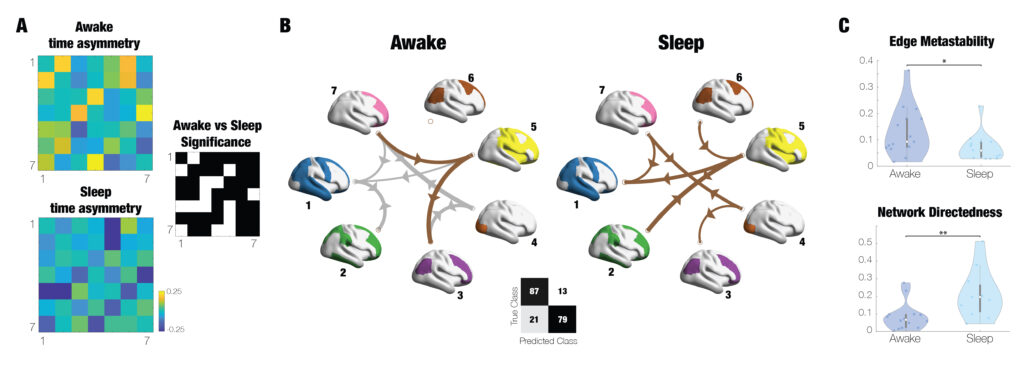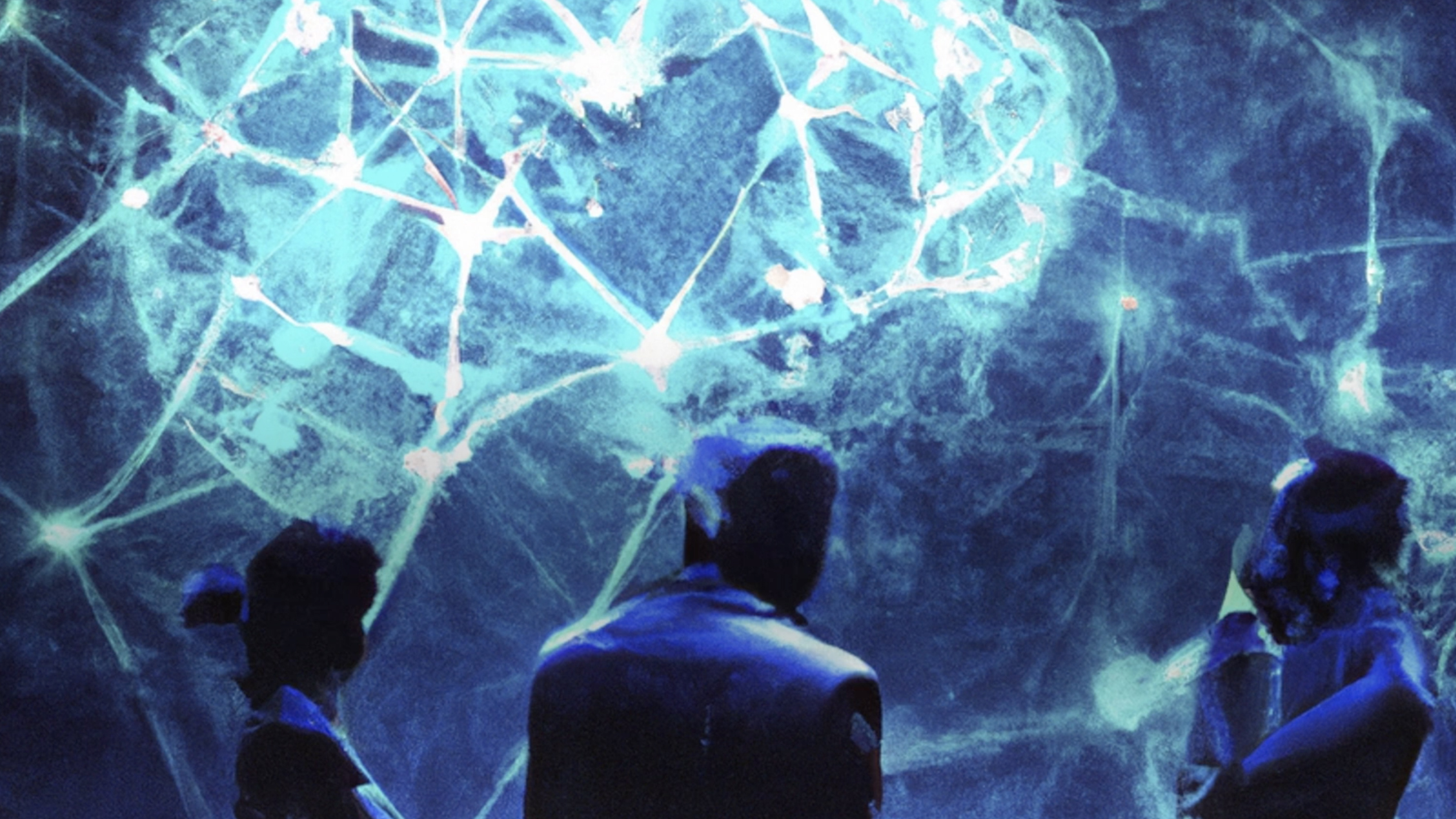Schrödinger's legacy for understanding the brain
On 16th of April 2025, Sabine Hossenfelder published a beautiful and fun YouTube film “Researchers find major clue to consciousness“:
With her usual humour and grace, Sabine summarises the findings in our recent Physical Review E paper “Complex harmonics reveal low-dimensional manifolds of critical brain dynamics”. We are delighted that this has raised significant interest in our research.
In many ways, our paper is a homage to Erwin Schrödinger and his ground-breaking discoveries not just in quantum mechanics but also in thermodynamics. After winning the Nobel Prize in 1933 he turned his attention to thermodynamics, and how any living organism is constantly exchanging a flux of matter and energy with its environment.
Our research programme is dedicated to solving deep questions in neuroscience using methodologies and mathematical ideas from physics – including those developed by Schrödinger. The key idea in this paper is the CHARM (Complex Harmonics decomposition) framework, which is inspired by the elegant mathematical structure of Schrödinger’s wave equation. This does of course not mean that the brain is quantum, but rather that Schrödinger’s equation is perfect for capturing critical spacetime brain dynamics.
CHARM captures the non-local, distributed computation at the whole-brain level made possible by criticality and amplified by the rare long-range connections found in the brain’s unique anatomical structure. This allowed us to find significant differences between wakefulness and sleep. Much research remains to solve the nature of consciousness but our result is part of the emerging important clues, and in particular the role of criticality.

CHARM captures the distinct network interactions between different conscious brain states. A) The two matrices of the shifted functional connectivity between seven manifold networks reflect different interactions in wakefulness (top) and deep sleep (bottom). Importantly, there are significant differences (white squares) between the two matrices (p<0.05). B) These time asymmetries are illustrated (for the top 20 percentage) of arrows between the seven manifold networks for awake vs sleep, where the grey arrows correspond to negative and brown to positive interactions, and their thickness to the value of these interactions. As can be seen the flow of interaction is very different for wakefulness compared to deep sleep. Machine learning was able to separate these interactions with an accuracy of 84 percent. C) The spatiotemporal characteristics in the CHARM latent space can be captured by the Edge metastability which is significantly different between awake and sleep (upper panel, p<0.05). Similarly, the reconfiguration of the hierarchical information flow is captured by the measure of network directedness of the shifted functional connectivity of the manifold network, which is also significantly different between awake and sleep (lower panel, p<0.01).
Perhaps most importantly, our results begin to address how the brain can compute the rich repertoire of behaviours necessary to survive and thrive on its very modest energy budget of 10-20 Watts. Why is the human brain so much better at adapting to the multiplicity of stimuli and outcomes than current generations of computers, artificial neural deep learning and reservoir model architectures?
In order to truly solve this problem, our research programme engages with key thermodynamic ideas including those of Schrödinger later in life from his classic book from 1944 What Is Life?. Here he proposed that sustaining life is exactly predicated on avoiding equilibrium: ‘How does the living organism avoid decay? … By eating, drinking, breathing and … assimilating. The technical term is metabolism’. According to this view, the ultimate equilibrium is death, and thus survival depends on staying as far as possible from equilibrium.
Our research has shown that to not only survive, but also thrive, the brain must efficiently orchestrate distributed computation across space and time. This requires hierarchical organisation facilitating fast information transfer and processing at the lowest possible metabolic cost. Our unifying ‘Thermodynamics of Mind’ framework uses the thermodynamics concepts of irreversibility and non-equilibrium to quantify hierarchical brain orchestration and its underlying mechanisms.
This is also helps understand, how the brain is able to survive given the relative slowness of the underlying signals. This is possible due to turbulence, the irreversible dynamical regime taking place far from equilibrium while showing strong time asymmetry. Originally coined as “turbolenza” by Leonardo DaVinci over half a millennium ago and subsequently developed by many mathematicians, turbulence is ubiquitous in nature as an essential dynamical regime facilitating efficient energy and information transfer across spatiotemporal scales.
Overall, our research shows that turbulence and thermodynamic non-equilibrium are two sides of the same coin of how the brain is driven by and navigates the environment. These principles allow us not only to survive but also, from time to time, to thrive. One of our main current goals is therefore set on using this framework to discover the underlying brain mechanisms by studying brain states such as meditation, music and psychedelics that are known to evoke states of eudaimonia and flourishing.
Read more about the underlying science:
Kringelbach M.L., Sanz Perl Y. & Deco G. (2024) The Thermodynamics of Mind. Trends in Cognitive Science, 28(6):568-581.
Deco G., Sanz Perl Y., Jerotic K., Eschrichs A. & Kringelbach M.L. (2025) Turbulence as a framework for brain dynamics in health and disease. Neuroscience & Biobehavioral Reviews 169:105988
Kringelbach M.L., Vuust P. & Deco G. (2024) Building a science of human pleasure, meaning-making and flourishing. Neuron, 112(9), 1392-1396.











